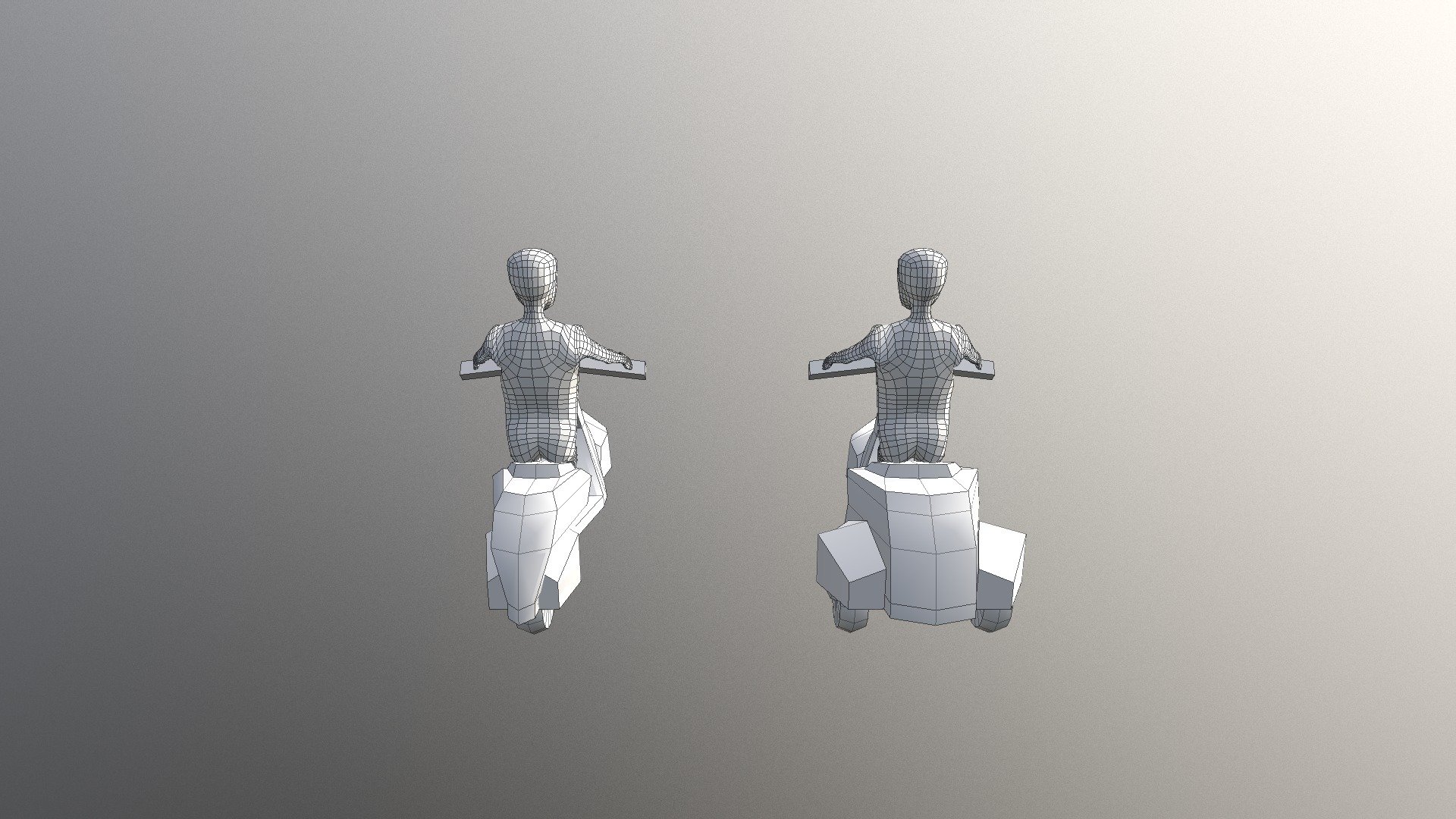
Vespa2
sketchfab
The human body is a complex system that has been evolving over millions of years. It consists of trillions of cells, each with its own unique function and purpose. From the top of the head to the soles of the feet, every part of the human body plays a vital role in keeping us alive and functioning properly. The brain, which is housed within the skull, serves as the control center of the body. It processes information, controls movement, and regulates various bodily functions such as heart rate, breathing, and digestion. The brain is made up of billions of neurons that communicate with each other through electrical and chemical signals. The nervous system, which includes the brain, spinal cord, and nerves, plays a crucial role in transmitting information throughout the body. It allows us to feel sensations, move our muscles, and respond to stimuli. The nervous system is divided into two main parts: the central nervous system (CNS), which includes the brain and spinal cord, and the peripheral nervous system (PNS), which consists of nerves that branch out from the CNS. The circulatory system, also known as the cardiovascular system, is responsible for transporting blood throughout the body. It consists of the heart, arteries, veins, and blood vessels. The heart pumps blood through the arteries to deliver oxygen and nutrients to the body's cells. The veins return deoxygenated blood back to the heart. The respiratory system, which includes the lungs, airways, and diaphragm, is responsible for bringing oxygen into the body and removing carbon dioxide. When we breathe in, oxygen enters our lungs and diffuses into the bloodstream. Carbon dioxide, a waste product of metabolism, is removed from the bloodstream and exhaled out of the body. The digestive system, which includes the mouth, esophagus, stomach, small intestine, and large intestine, breaks down food into nutrients that can be absorbed by the body. The mouth chews food, breaking it down into smaller particles. The esophagus carries food from the mouth to the stomach, where it is mixed with digestive enzymes. The small intestine absorbs most of the nutrients from food, while the large intestine eliminates waste. The muscular system consists of skeletal muscles, smooth muscles, and cardiac muscle. Skeletal muscles allow us to move our bones and support our body weight. Smooth muscles, found in organs such as the stomach and intestines, help to move substances through these organs. Cardiac muscle, which makes up the heart, pumps blood throughout the body. The endocrine system, also known as the glandular system, produces hormones that regulate various bodily functions. The thyroid gland regulates metabolism, while the adrenal glands produce hormones involved in stress response and electrolyte balance. The pancreas produces insulin, which regulates blood sugar levels. The immune system protects the body from disease-causing microorganisms such as bacteria, viruses, and fungi. It consists of white blood cells, lymph nodes, and other organs that work together to defend against infection. In conclusion, the human body is a complex and intricate system that relies on the interplay of various systems to function properly. Each system plays a vital role in keeping us alive and healthy.
With this file you will be able to print Vespa2 with your 3D printer. Click on the button and save the file on your computer to work, edit or customize your design. You can also find more 3D designs for printers on Vespa2.
